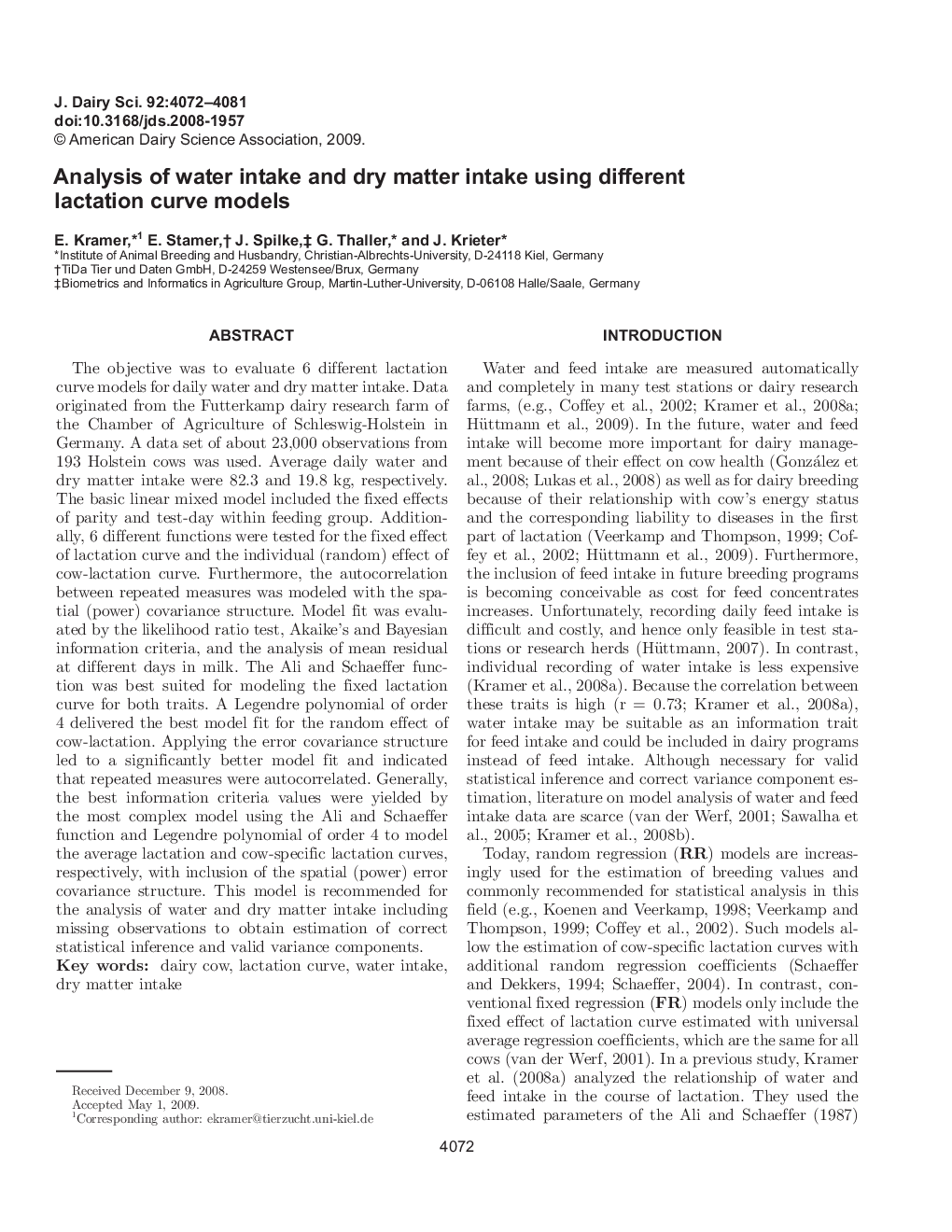| Article ID | Journal | Published Year | Pages | File Type |
|---|---|---|---|---|
| 2439089 | Journal of Dairy Science | 2009 | 10 Pages |
Abstract
The objective was to evaluate 6 different lactation curve models for daily water and dry matter intake. Data originated from the Futterkamp dairy research farm of the Chamber of Agriculture of Schleswig-Holstein in Germany. A data set of about 23,000 observations from 193 Holstein cows was used. Average daily water and dry matter intake were 82.3 and 19.8Â kg, respectively. The basic linear mixed model included the fixed effects of parity and test-day within feeding group. Additionally, 6 different functions were tested for the fixed effect of lactation curve and the individual (random) effect of cow-lactation curve. Furthermore, the autocorrelation between repeated measures was modeled with the spatial (power) covariance structure. Model fit was evaluated by the likelihood ratio test, Akaike's and Bayesian information criteria, and the analysis of mean residual at different days in milk. The Ali and Schaeffer function was best suited for modeling the fixed lactation curve for both traits. A Legendre polynomial of order 4 delivered the best model fit for the random effect of cow-lactation. Applying the error covariance structure led to a significantly better model fit and indicated that repeated measures were autocorrelated. Generally, the best information criteria values were yielded by the most complex model using the Ali and Schaeffer function and Legendre polynomial of order 4 to model the average lactation and cow-specific lactation curves, respectively, with inclusion of the spatial (power) error covariance structure. This model is recommended for the analysis of water and dry matter intake including missing observations to obtain estimation of correct statistical inference and valid variance components.
Related Topics
Life Sciences
Agricultural and Biological Sciences
Animal Science and Zoology
Authors
E. Kramer, E. Stamer, J. Spilke, G. Thaller, J. Krieter,
